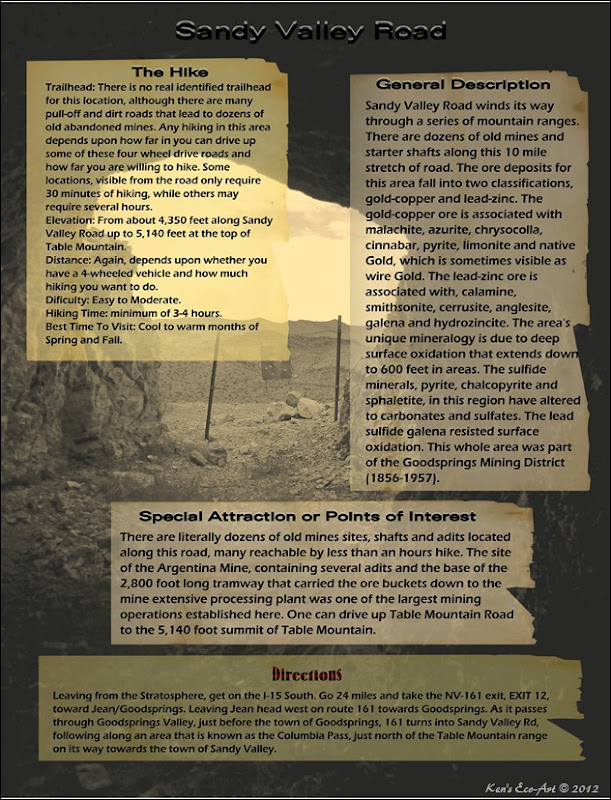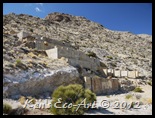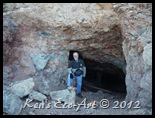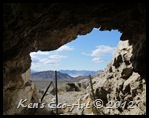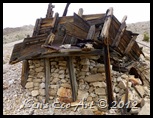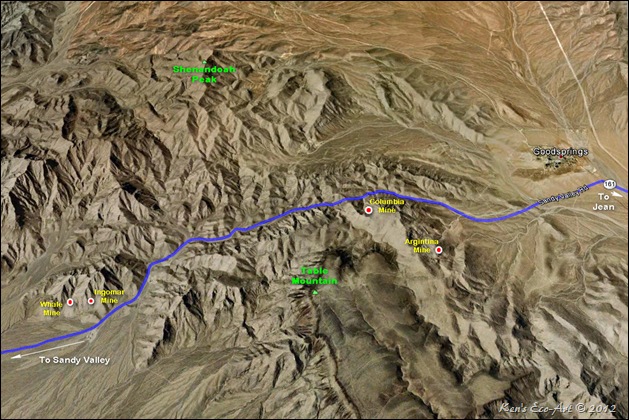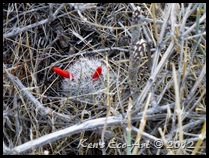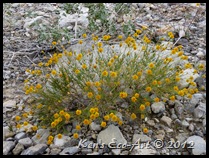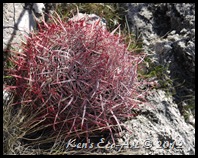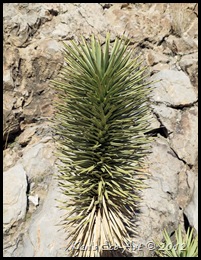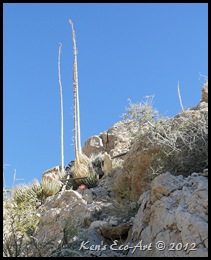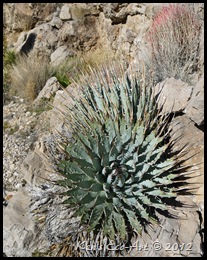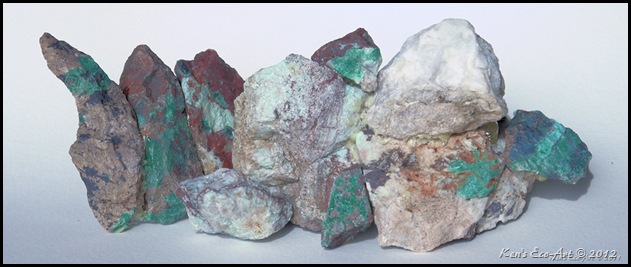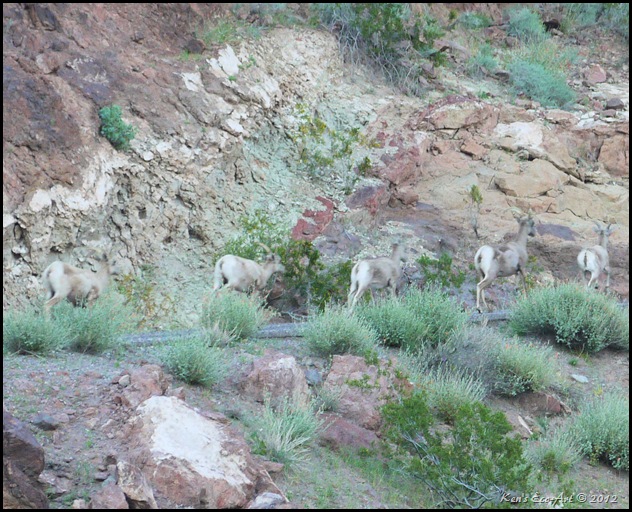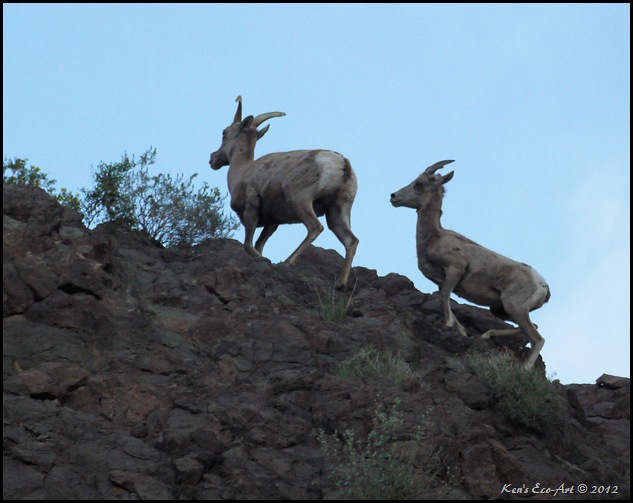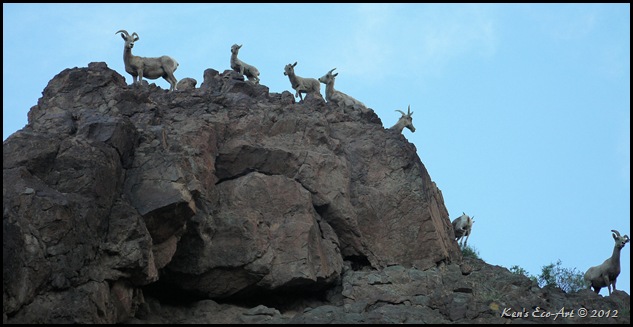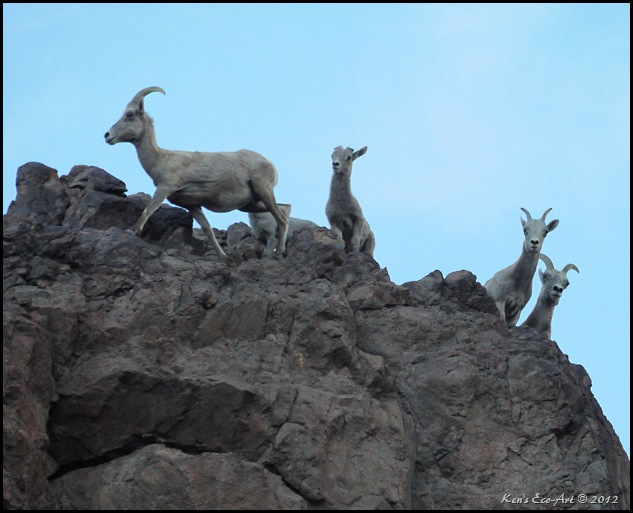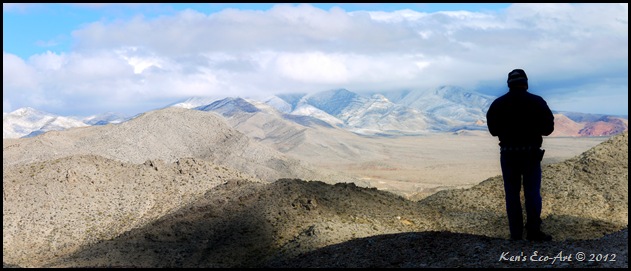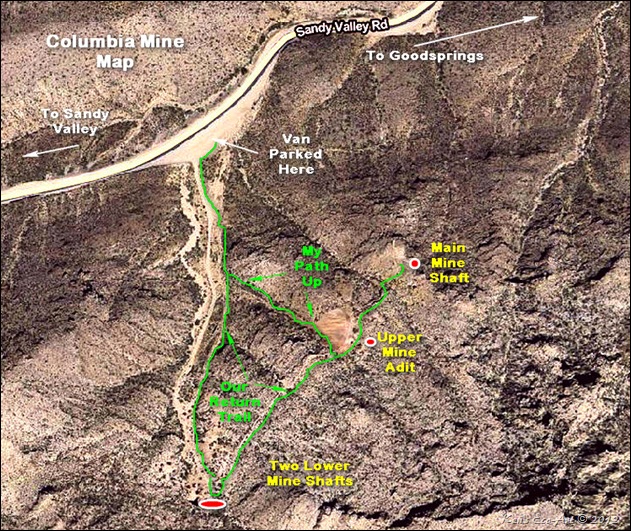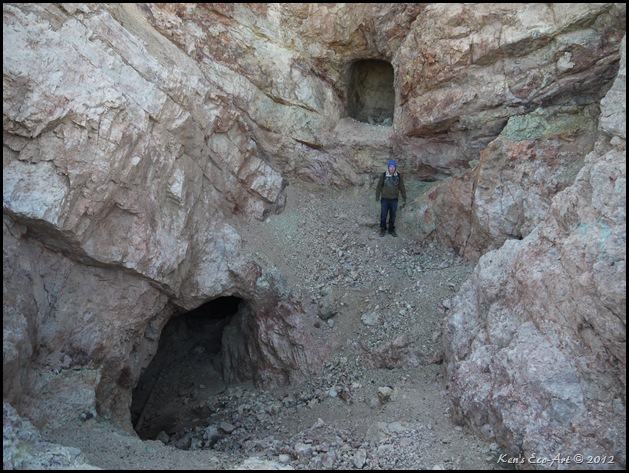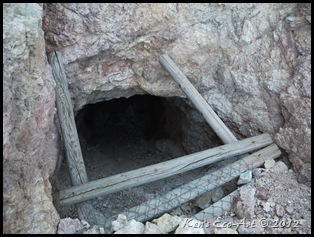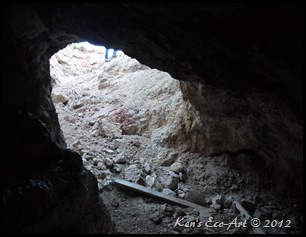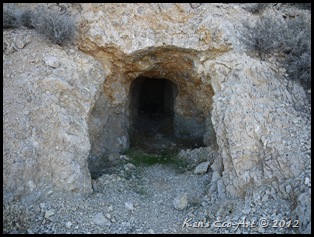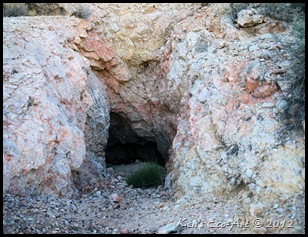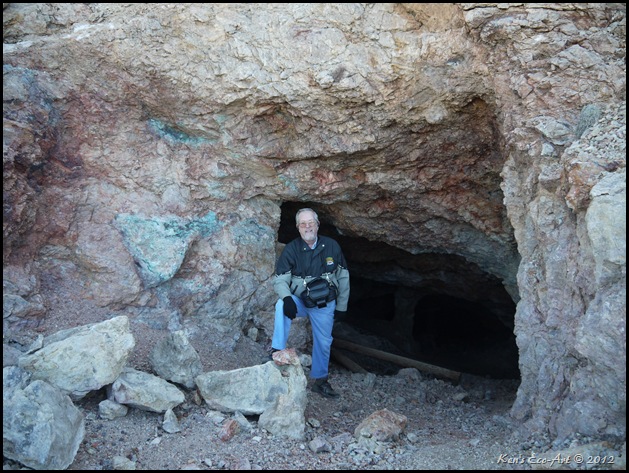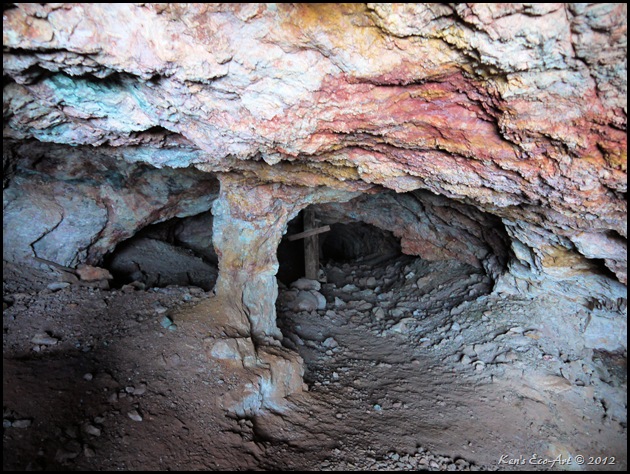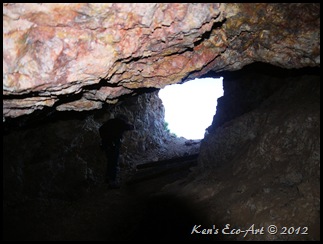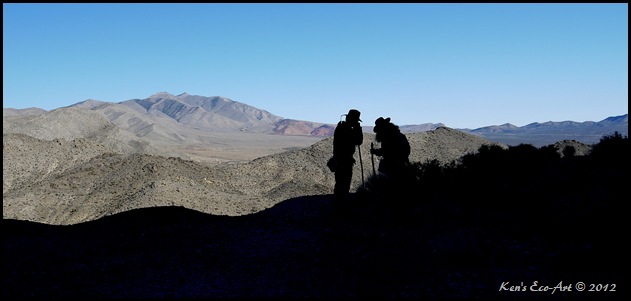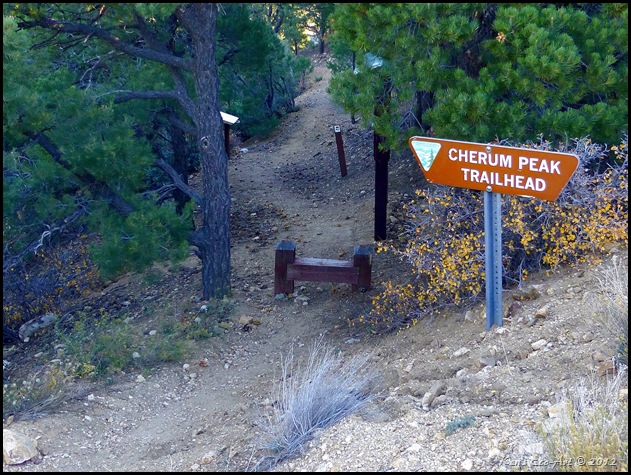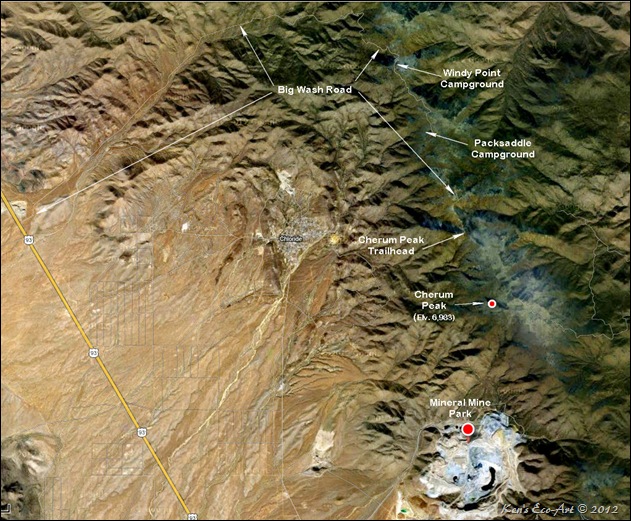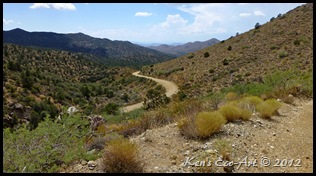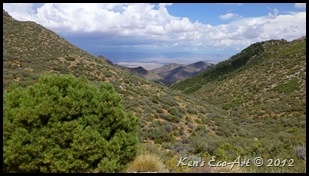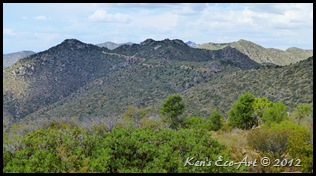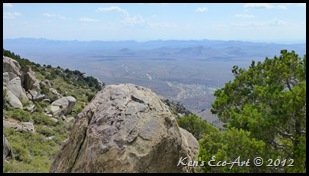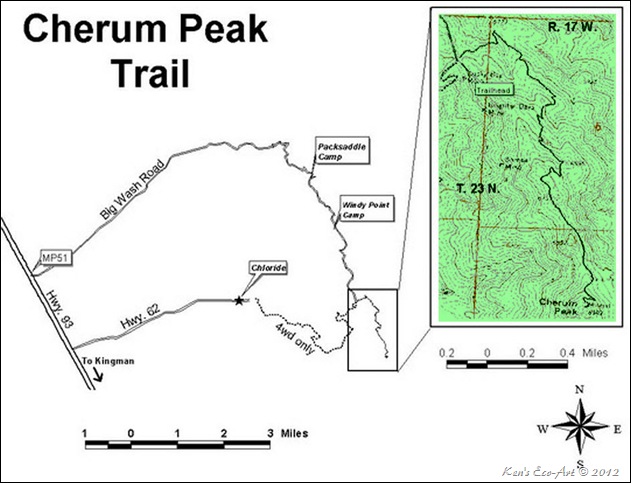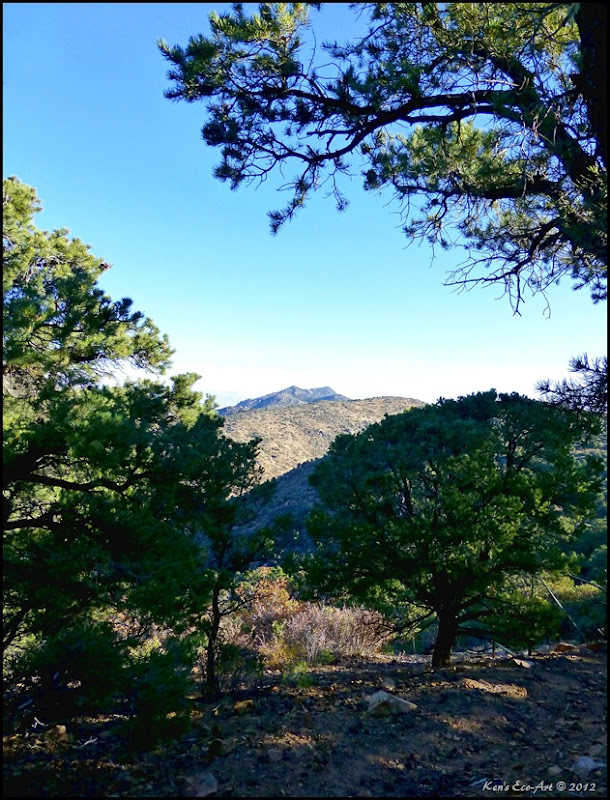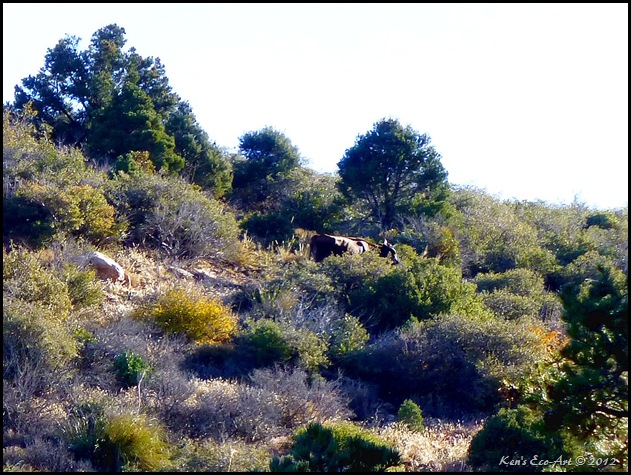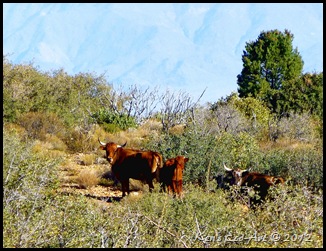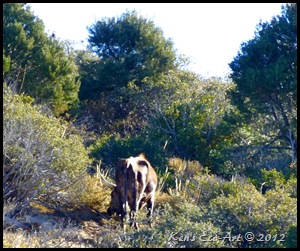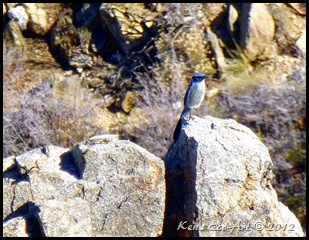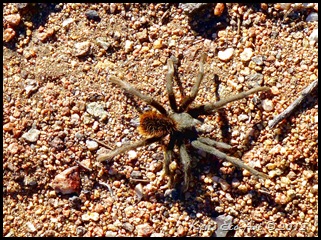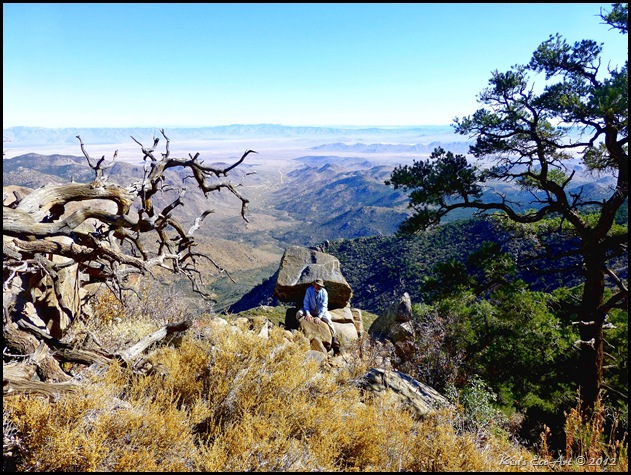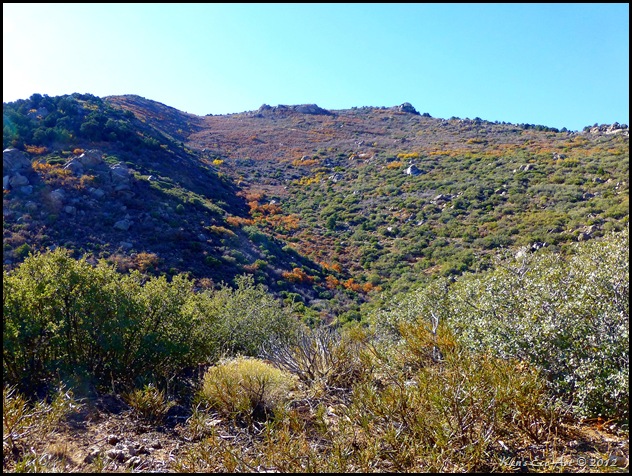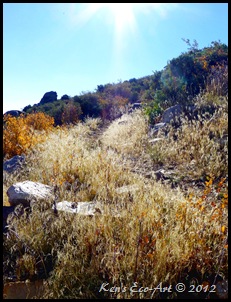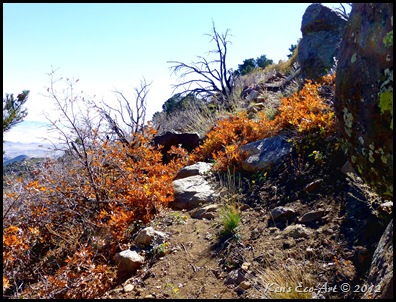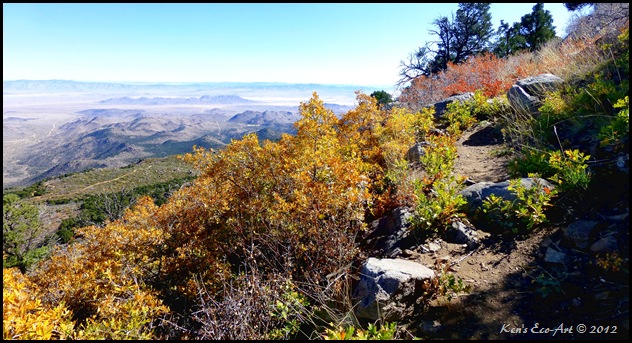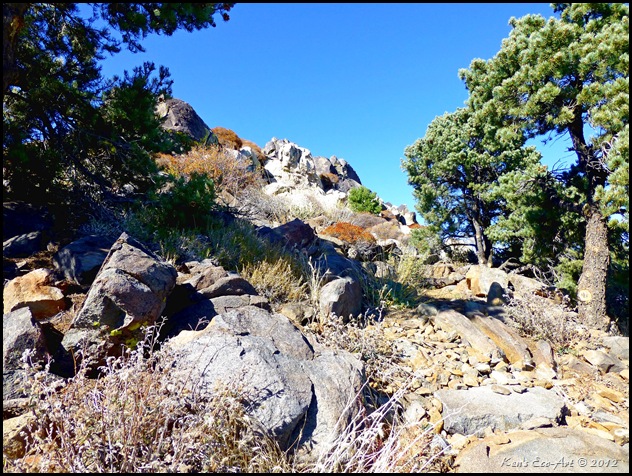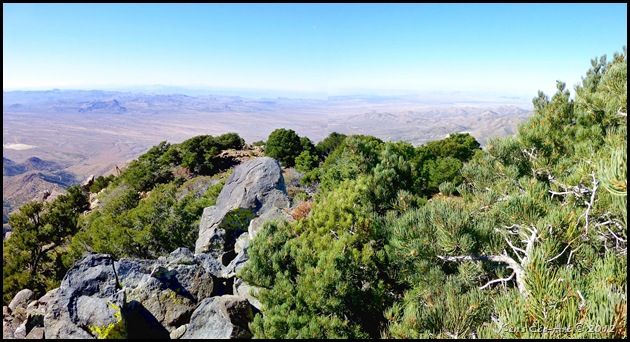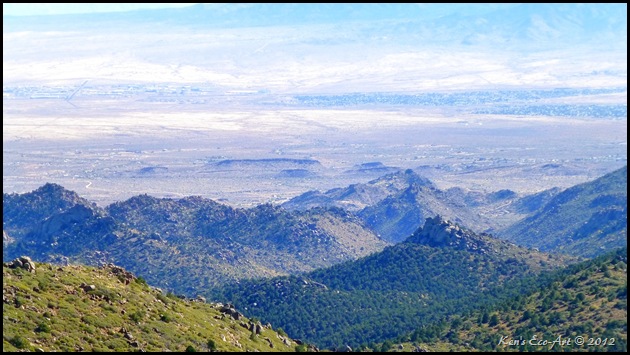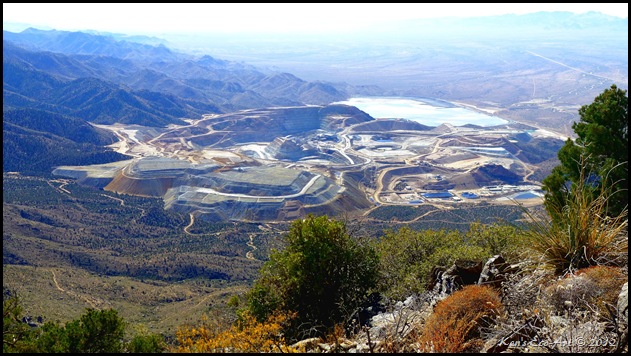| Click here to check out some photo tips that I recently added to my Photography Journal site on using your camera’s Program Mode: Intelligent Auto Mode vs Manual Program Mode. |
Sunday
New Photo Tip
Friday
New Photo Tip
| Click here to check out some photo tips that I recently added to my Photography Journal site for producing better focus and composition in your pictures: Tips for Obtaining the Best Focus |
Sunday
Lovell Wash Hikes
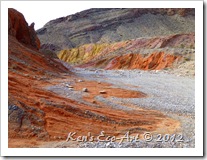 On Thursday’s hike with the rock-hounds from Henderson’s Heritage Park Senior Facility, we hiked the Lovell Wash area along Lake Mead’s Northshore Road. Though this area is best known for the Anniversary Mine site and the narrow slot canyon, aka Anniversary Narrows, at the upper end of the wash, the lower end of the wash, north of Lake Mead’s Northshore road is also well worth a hike. Because many of us have been here before, we all seemed to branch off, each picking areas that we hadn’t hiked in the past. Because each of the areas here offers its own unique findings, I created separate posts to adequately describe and show pictures for each area. The following link will take you to a page that describes Lovell Wash and provides you with links to each location ... Lovell Wash. On Thursday’s hike with the rock-hounds from Henderson’s Heritage Park Senior Facility, we hiked the Lovell Wash area along Lake Mead’s Northshore Road. Though this area is best known for the Anniversary Mine site and the narrow slot canyon, aka Anniversary Narrows, at the upper end of the wash, the lower end of the wash, north of Lake Mead’s Northshore road is also well worth a hike. Because many of us have been here before, we all seemed to branch off, each picking areas that we hadn’t hiked in the past. Because each of the areas here offers its own unique findings, I created separate posts to adequately describe and show pictures for each area. The following link will take you to a page that describes Lovell Wash and provides you with links to each location ... Lovell Wash. |
Wednesday
Bellagio’s Botanical Garden - Fall Display
{REMEMBER - Click on any image to view full size, then use the back button on your browser to return to this page}
| ||
| ||
|
Monday
Sandy Valley Road Hikes
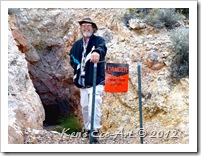 On 11/08/2012 I went back for another hike along Sandy Valley Road with the rock-hounds from the Henderson Heritage Park Senior Facility. Because this was the second time I have visited this area in the past year, I decided to completely revamp my previous posts for this area and created separate pages for each mine location we have hiked. Click here to obtain links to these new pages … Daytrip - Sandy Valley Road. On 11/08/2012 I went back for another hike along Sandy Valley Road with the rock-hounds from the Henderson Heritage Park Senior Facility. Because this was the second time I have visited this area in the past year, I decided to completely revamp my previous posts for this area and created separate pages for each mine location we have hiked. Click here to obtain links to these new pages … Daytrip - Sandy Valley Road. |
Wednesday
Cherum Peak Hike
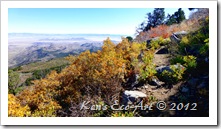 On election day Harvey Smith and I decided to head for Arizona and hike the Cherum Peak Trail. At 6,983 feet, Cherum Peak is the 2nd highest peak in the 23 mile long Cerbat Mountain range that runs slightly northwest-southeast, about 25 miles north of Kingman, Arizona. This was a relatively strenuous, 6-mile round-trip hike. We first spotted this trail while roaming the area on a trip we made to Chloride this past August, and have both wanted to hike it ever since. Well, been there, done that! Click here for pictures and a description of this beautiful area … Cherum Peak Hike. On election day Harvey Smith and I decided to head for Arizona and hike the Cherum Peak Trail. At 6,983 feet, Cherum Peak is the 2nd highest peak in the 23 mile long Cerbat Mountain range that runs slightly northwest-southeast, about 25 miles north of Kingman, Arizona. This was a relatively strenuous, 6-mile round-trip hike. We first spotted this trail while roaming the area on a trip we made to Chloride this past August, and have both wanted to hike it ever since. Well, been there, done that! Click here for pictures and a description of this beautiful area … Cherum Peak Hike. |
Monday
Kingsbury Grade North Trail Hike
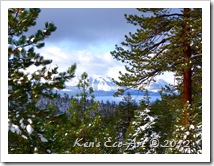 Kingsbury Grade North Trailhead: Past Brautovich Park at the end of Andria Drive off of North Benjamin Road near the top of Kingsbury Grade there is a trailhead for the Kingsbury Grade North trail. Between an elevation of 7,780 to 7,860 feet, this relatively easy, short 0.5 mile hike winds through open forests of Jeffrey pine and white fir. Near the end you come to a marked vista spot with a glimpse of South Lake Tahoe. Continuing even further, you are rewarded with some nice views of Castle Rock and the west shore of Lake Tahoe Kingsbury Grade North Trailhead: Past Brautovich Park at the end of Andria Drive off of North Benjamin Road near the top of Kingsbury Grade there is a trailhead for the Kingsbury Grade North trail. Between an elevation of 7,780 to 7,860 feet, this relatively easy, short 0.5 mile hike winds through open forests of Jeffrey pine and white fir. Near the end you come to a marked vista spot with a glimpse of South Lake Tahoe. Continuing even further, you are rewarded with some nice views of Castle Rock and the west shore of Lake Tahoe |
Sunday
Upper Las Vegas Wash Hike
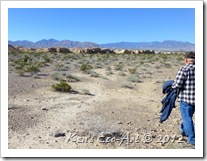 On 10/30/2012 Harvey and I hiked the Upper Las Vegas Wash area looking for the location of the the 1962 paleontological dig that uncovered hundreds of old fossils. Upper Las Vegas Wash is a series of aprons — bajadas — that fringe the rugged ranges of the Sheep Mountain Range. Though this part of the wash is normally dry, except during the monsoon season, it has been accumulating sediment for many centuries, leaving a sedimentary record of conditions and ecosystems covering millions of years. Unfortunately we didn’t find anything of interest, not even a shell, let along examples of extinct mammoths and ground sloth fossils. For more information on this location, click here … Upper Las Vegas Wash. On 10/30/2012 Harvey and I hiked the Upper Las Vegas Wash area looking for the location of the the 1962 paleontological dig that uncovered hundreds of old fossils. Upper Las Vegas Wash is a series of aprons — bajadas — that fringe the rugged ranges of the Sheep Mountain Range. Though this part of the wash is normally dry, except during the monsoon season, it has been accumulating sediment for many centuries, leaving a sedimentary record of conditions and ecosystems covering millions of years. Unfortunately we didn’t find anything of interest, not even a shell, let along examples of extinct mammoths and ground sloth fossils. For more information on this location, click here … Upper Las Vegas Wash. |
Saturday
Hike to Spirit Mountain and Bridge Canyon Wilderness Areas
|
Friday
Sandy Valley Road, Nevada - Summary Page
{Click on an image to enlarge, then use the back button to return to this page}
This page last updated on 07/17/2018
(OPTION 1) Each show is designed to run automatically in place, without leaving the current browser window. If the show is not already running, just click the large "Play" button in the middle of the picture and let it run.
(OPTION 2) Running the cursor over the picture being shown will PAUSE the show and bring up a navigation bar at the bottom of the slideshow window with Pause, Forward and Back buttons, allowing you to start, stop or manually forward or back up pictures one at a time. |
Thursday
Desert Bighorn Sheep
Having had lived in Henderson for more than six years, we had been to Boulder City on many occasions, yet had never been aware of the daily treck of the Desert Bighorn Sheep to Hemenway Park. We didn't even realize that the Desert Bighorn Sheep were Nevada's state animal. In July of 2009, based upon a tip from two of our dearest neighbor friends, Sue and Nancy Eustis, Connie and I, along with another one of our neighbors, Marc Resnic, decided to take a drive over to Hemenway Park to see what we could find. What a find it was. During our three hour stay, we must have witnessed 35-40 of these beautiful animals frolicking in the park and roaming through the yards of the surrounding homes. They are becoming more and more popular as families, couples and even tour buses now routinely stop by the park. We even got to hear the cracking of horns as we witnessed some head-to-head combat between a couple of rams. We now try to stop by the park at least once a year. Each visit provides a different and unique experience and a host of wonderful pictures. This is one of my favorites. Connie came up with the title for the above shot.
Description: The Bighorn's body is compact and muscular; the muzzle, narrow and pointed; the ears, short and pointed; the tail, very short. The fur is deer-like and usually a shade of brown with whitish rump patches. The fur is smooth and composed of an outer coat of brittle guard hairs and short, gray, crimped fleece underfur. The summer coat is a rich, glossy brown but it becomes quite faded by late winter. The male sheep is called a ram and can be recognized by his massive brown horns. The horns curl back over the ears, down, and up past the cheeks. By the time a ram reaches 7 or 8 years of age, he can have a set of horns with a full curl and a spread of up to 33 inches. Ewes, the females, are smaller than the rams and have shorter, smaller horns that never exceed half a curl.
Some more curious facts: Bighorn Sheep's horns grow all their lives. You and tell a sheep's age by counting its horns' growth rings, one for each year. They are known for head-to-head combat between males. Combat between rams has been observed to last for longer than 24 hours. Horn size is a symbol of rank. Male horns can weigh as much as 30 lbs. Desert Bighorn do not require drinking water in winter when green vegetation is available. During the summer months they visit waterholes at least every 3 days. Bighorns have a complex 9-stage digestive process that allows them to maximize removal of nutrients from food of marginal quality.
The slideshow below is designed to run automatically in place. Clicking anywhere in the black background area that surrounds the picture being shown will PAUSE the show and bring up the Pause, Forward and Back menu at the bottom of the slideshow window, allowing you to start, stop or manually forward pictures one at a time. To view the slideshow full-screen, click in the middle of the running show. When the new browser window appears, click on the left side of the menu where it says "slideshow". |
Slideshow Description: The slideshow above contains 30 pictures that were taken during four or five visits to Boulder City's Hemenway Park over the past couple of years. |
Desert Bighorn Sheep at Hoover Dam
| 04/02/2011 Trip Notes: While my cousin from New York state was visiting us on his return trip from wintering in New Mexico, we decided to get up early and head over to the Hoover Dam for some early morning picture taking and a tour of the dam. Arriving just before sunrise, and before any of the day’s tourist crowd showed up, we caught a herd of Desert Bighorn Sheep grazing (Fig. 01) in one of the ravines on the south side of the dam. Sensing and not liking out presence, they immediately climbed up out of the ravine, crossed the road and scampered up the cliff-side (Fig. 02) along the southern edge of the dam. Once they reached the top of the ridge (Fig. 03) and no longer felt threatened, they spent the next several minutes quietly observing us (Fig. 04) before disappearing down the back side. | ||
| ||
| ||
| ||
| ||
Desert Bighorn Sheep at Hemenway Park in Boulder City
| 01/19/2012 Trip Notes: On the return of a hiking trip along Lake Mead’s South Shore Drive, we spotted some bighorn sheep on our way past Hemenway Park outside of Boulder City. It appeared that most of them were done grazing for the day and were headed back up into the mountains behind the park. I took the shots in (Figs. 01 thru 04) as they began scampering up the hillside behind the park. |
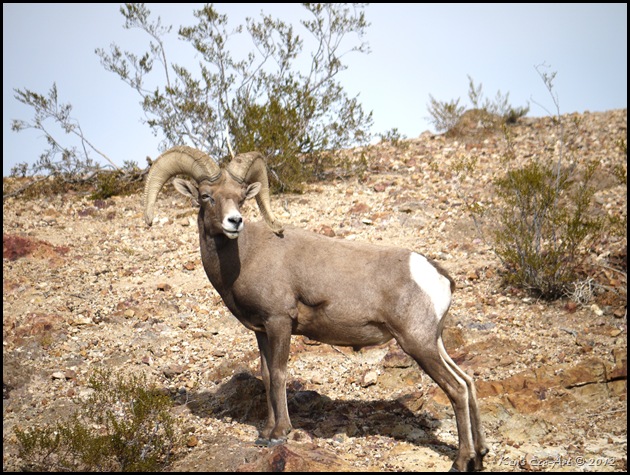 |
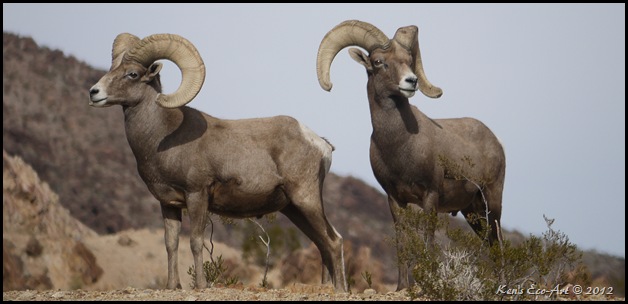 |
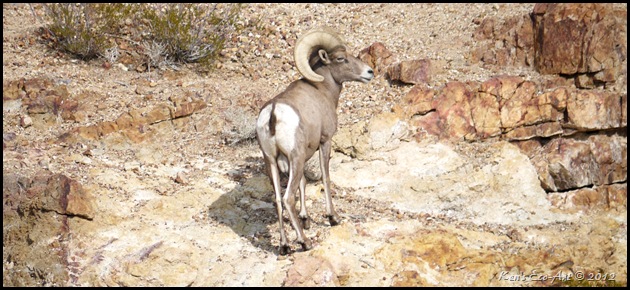 |
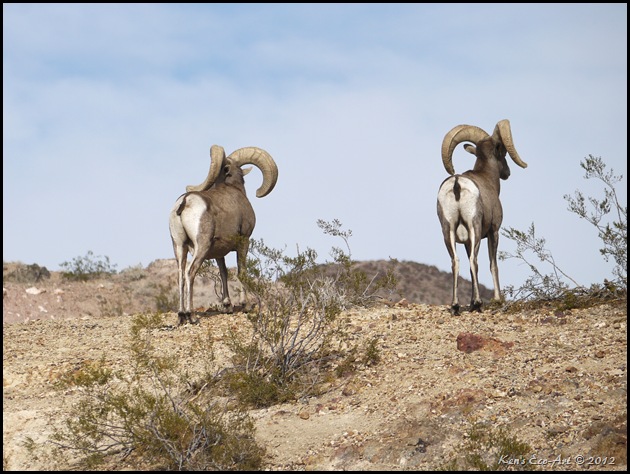 |
Columbia Mine – Sandy Valley Road
{Click on an image to enlarge, then use the back button to return to this page}
| ||
| ||
| Mine Description: Whenever we hike this area we always make a stop at the Columbia Mine. There are a number of adits, shafts and mine openings here (Fig. 02), some even large enough to do a little exploring. Part of the Goodsprings Mining District in Clarke County, the Columbia Mine was located in 1886, though one local report states that a prospector named Von Trigger, mined 10 tons of copper ore as early as 1880. In 1906, the property was bought for $20,000 by Joseph Dederich. The principal workings are two shafts about 800 feet apart, totaling about 500 feet in length. Total production from this mine is estimated to be around 3,000 tons of copper ore. | ||
| 11/08/2012 Trip Notes: Because this was my third visit to this area, I spent the majority of my time hiking up one of the small ravines that led to a large tailings pile at the top, picking up more than a dozens pieces of malachite. As a result, I didn’t take any pictures here on this visit – refer to the 02/16/2012 trip notes below for more information and pictures of this area. | ||
| 02/16/2012 Trip Notes: I really enjoyed my first hike to this area a year ago and have been looking forward to coming back ever since. The hills and mountains around Sandy Valley and Goodsprings are pock-marked with numerous old mines; some quite extensive while many others are just 10 foot prospect holes. Silver was discovered in the area in 1861. Between 1868 and 1882 lead and gold were also discovered in Goodsprings. Both Goodsprings and the Sandy Valley road area were very active in lead and zinc mining during WW1. However, due to falling demand and prices, by WW2 very few mines remained active. The above picture (Fig. 01) was taken at the top of the ridge line just past the largest of the mine’s openings, looking northeast towards Goodsprings. Below (Figs. 03 thru 05), are shots taken at the lower shafts. Connected by a short adit, you can actually climb between these two openings. As you continue hiking up the trail to the large shaft at the top you pass two additional adits (Figs. 06 & 07) that are only about 20 feet deep. They appear to have been exploratory digs that never panned out. When you reach the top, you are confronted with the largest of the mine openings (Fig. 08) found at this site. Some exploration of this shaft (Figs. 09 thru 11)revealed a series of branching tunnels that seemed to go in and downward for several hundred feet. This mine is without doubt one of the best places to visit in this area. Here in (Fig. 12) is just another beautiful view from the top of this mountain. | ||
|
|
|
|
|
| ||
|
|
|
|
Cherum Peak Hike – in Arizona’s Cerbat Mountains
Click on any image to view full size, then use the back button on your browser to return to this page}
| ||
| ||
| Area Description: Cherum Peak is the 2nd highest peak in the 23 mile long Cerbat Mountain range that runs slightly northwest-southeast, about 25 miles north of Kingman, Arizona. It lies directly east of the 130-mile long Black Mountains range and is separated by the Sacramento Valley bordering southwest of Kingman. The long Detrital Valley and plains drains northwest of the mountains into southern Lake Mead. A series of peaks can be found towards the southern end of the range, including Packsaddle Mountain at 6,431 feet and Cherum Peak at 6,983 feet with the community of Chloride on the northwestern side. The northern section of the Cerbat Mountains is composed mostly of the Mount Tipton Wilderness, with Mount Tipton being its peak at 7,148 feet . The Dolan Springs community is at the base of the wilderness on the northwestern side of the Cerbat Mountains. Reaching the Trailhead: To reach the Cherum Peak Trailhead (Fig. 01) you have to turn off US-93 at mile marker 51 and drive 15 miles up Big Wash Road. Refer to (Fig. 02) above. This well graded dirt road eventually provides you with dozens of sharp, hair-pin turns with extensive drop-offs, outstanding views and drop-dead scenery (Figs. 03 thru 06). As you drive south along the ridgeline on the way to the trailhead, elevation 6,000 feet, you pass two well maintained campgrounds, Windy Point Campground and Packsaddle Campground, both with restroom facilities. |
|
| ||||
|
|
| ||
| 11/06/2012 Trip Notes: Harvey Smith and I spent nearly six hours today hiking this trail and the surrounding area. As we left the trailhead, we wound our way through a forest of pinyon pine (Fig. 08) and the occasional juniper tree. Once past this area, the large central portion of the trail is surrounded by what is referred to as the Arizona chaparral community (Fig. 09); low brush that includes shrug live oak, manzanita, Wright's silk-tassel, broom snakeweed, skunkbush, New Mexican locust, Gambel oak and desert ceanothus. After about a half mile of hiking, imagine our surprise when we looked up an spotted three steers (Figs. 10 & 11) walking the trail about a 100 yards ahead of us. Other than a few raptors (such as hawks, eagles and large ravens) we encountered a variety of smaller birds, the most common being western scrub jays (Fig. 12). On the way up Harvey also spotted a tarantula (Fig. 13) walking in our pathway. On our journey to the peak, this three-mile hike took us over or around three smaller mountains with every summit and switchback providing better views (Figs. 14 thru 18) than the previous one. After nearly 2-1/2 hours of hiking and picture taking, we were finally looking up at the summit (Fig. 19). The views from the summit were outstanding and well worth the every bit of the effort to get there. To the northeast you can see Red Lake, a dry lake bed that fills with water during extended rainstorms. Beyond Hualapai Valley to the east are the Music Mountains. On a clear day you can see all the way to the San Francisco Peaks over by Flagstaff or Mount Charleston to the northwest. To the west (Fig. 20) , the town of Chloride and the Sacramento Valley are spread out below you, and beyond is the dramatic skyline of the Black Mountains. Looking south you can see the city of Kingman (Fig. 21) in the distance and, directly below you, the open pit mining operation of Mineral Park (Fig. 22). In the 1950s and 60s Mineral Park was actively mined for copper by the Duval Mining Company. Today it is operated by the Cyprus Copper Corporation. We were both astounded by the size of this mining operation. Click here to read more about this operation ... Mineral Park. | ||
| ||
|
|
|
|
|
| ||
|
|
|
| ||
| ||
| ||
| ||
|
Subscribe to:
Posts (Atom)






